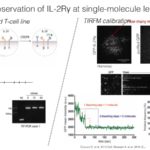Link to Pubmed [PMID] – 26861019
Link to DOI – 10.1128/mBio.01956-15e01956-15
mBio 2016 Feb; 7(1): e01956-15
The live attenuated yellow fever virus (YFV) vaccine 17D stands as a “gold standard” for a successful vaccine. 17D was developed empirically by passaging the wild-type Asibi strain in mouse and chicken embryo tissues. Despite its immense success, the molecular determinants for virulence attenuation and immunogenicity of the 17D vaccine are poorly understood. 17D evolved several mutations in its genome, most of which lie within the envelope (E) protein. Given the major role played by the YFV E protein during virus entry, it has been hypothesized that the residues that diverge between the Asibi and 17D E proteins may be key determinants of attenuation. In this study, we define the process of YFV entry into target cells and investigate its implication in the activation of the antiviral cytokine response. We found that Asibi infects host cells exclusively via the classical clathrin-mediated endocytosis, while 17D exploits a clathrin-independent pathway for infectious entry. We demonstrate that the mutations in the 17D E protein acquired during the attenuation process are sufficient to explain the differential entry of Asibi versus 17D. Interestingly, we show that 17D binds to and infects host cells more efficiently than Asibi, which culminates in increased delivery of viral RNA into the cytosol and robust activation of the cytokine-mediated antiviral response. Overall, our study reveals that 17D vaccine and Asibi enter target cells through distinct mechanisms and highlights a link between 17D attenuation, virus entry, and immune activation.The yellow fever virus (YFV) vaccine 17D is one of the safest and most effective live virus vaccines ever developed. The molecular determinants for virulence attenuation and immunogenicity of 17D are poorly understood. 17D was generated by serially passaging the virulent Asibi strain in vertebrate tissues. Here we examined the entry mechanisms engaged by YFV Asibi and the 17D vaccine. We found the two viruses use different entry pathways. We show that the mutations differentiating the Asibi envelope (E) protein from the 17D E protein, which arose during attenuation, are key determinants for the use of these distinct entry routes. Finally, we demonstrate that 17D binds and enters host cells more efficiently than Asibi. This results in a higher uptake of viral RNA into the cytoplasm and consequently a greater cytokine-mediated antiviral response. Overall, our data provide new insights into the biology of YFV infection and the mechanisms of viral attenuation.






